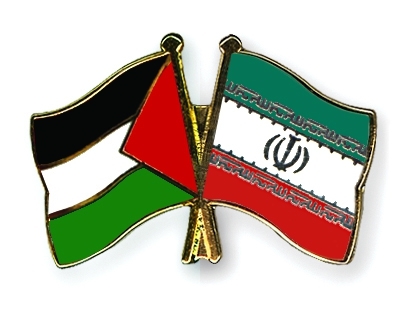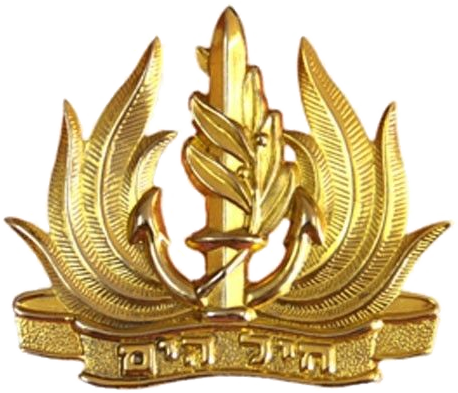Trump is serious about slashing aid to Palestinians and Hizballah-dominated Lebanon, DEBKAfile, January 4, 2017

In view of the Trump administration Middle East policies, which meet Israel’s most vital security concerns, the attitude adopted towards Hamas by Israel’s defense minister Avigdor Lieberman and IDF Chief of Staff Lt. Gen. Gady Eisenkott is incomprehensible. At a time that Washington is clamping down hard on Iran’s anti-Israel friends, pawns and proxies in the Middle East, Israel’s own security leaders are talking quietly to Hamas. They believe they can coax the leaders of this Iranian-funded terrorist organization into stopping the rocket and mortar fire from Gaza which beset Israel almost daily. Still worse, they are using as their main intermediaries local UNRWA officers, who are notoriously antagonistic to Israel and represent a UN body targeted by the Trump administration for the cutoff of aid. They are assisted by a UN Middle East envoy, Nikolay Mladenov of Bulgarian.
These talks have achieved very little. Hamas has only consented to its own operatives refraining from firing the rockets, but shuts both eyes when fellow terrorist factions keep the rockets coming, so long as they are kept to a “moderate” trickle. Given these contacts with Hamas, it is hard for Israel to raise an outcry when a Palestinian Authority official gets together with its arch-foe, Hassan Nasrallah. Meanwhile, “moderate” rocket fire is a continuous bane for hundreds of thousands of Israelis who are trying to live normal lives.
***************************************
Palestinian leaders in Ramallah were wrong to assume that President Donald Trump does not seriously mean to cut off US aid. He meant exactly what he said when he tweeted on Wednesday, Jan. 3: …we pay the Palestinians HUNDRED OF MILLIONS OF DOLLARS a year and get no appreciation or respect. They don’t even want to negotiate a long overdue… peace treaty with Israel. We have taken Jerusalem, the toughest part of the negotiation, off the table, but Israel, for that, would have had to pay more.” He then asked rhetorically: “But with the Palestinians no longer willing to talk peace, why should we make any of these massive future payments to them?”
DEBKAfile points out that, in the first place, Donald Trump is always serious when he discusses money, and, in the second, he is ready to wield the axe on US aid programs, not just for Ramallah (and Pakistan), but across the Middle East. Nations and organizations even slightly tainted with Iranian influence are especially targeted.
Hizballah’s secretary general Hassan Nasrallah was fast on the uptake. In a speech on Wednesday night, he stressed that Iran and his own organization were financing the Palestinian struggle over Jerusalem. He disclosed a recent meeting he had in Beirut with Azzam Al-Ahmed of Fatah, PA Chairman Mahmoud Abbas’ special emissary for negotiations with Hamas.
In his speech, he made four points which represented Tehran’s reply to Trump:
- The Palestinians need not worry. They can rely on Iran and Hizballah to make up the funding shortfall resulting from the cutoff of US aid.
- The Fatah-Hamas reconciliation talks brokered by Egypt depend above all on Hizballah’s say-so for a Hamas decision.
- Even Abbas is forced to accept this, which is why he had no choice but to send a representative of his Fatah party for a secret meeting with the Hizballah leader. Since Hamas’ deputy chief, Salah Arouri, had already spent time with Nasrallah before traveling to Tehran, Abbas had decided he had better place his party and the Palestinian Authority in Ramallah on an equal footing with Hams vis-a-vis Tehran.
- Just as Iran and Hizballah are bankrolling Hamas and Jihad Islami for fighting Israel from the Gaza Strip, they are also backing the Palestinian struggle for Jerusalem. This cuts Jordan out of the picture. Whether or not this is the truth, Nasrallah’s rhetoric made an impression on Palestinian and wider Arab opinion.
Until recently, some US administration officials were certain they had managed to extract Lebanese President Michel Aoun and the Lebanese army from the Iranian-Hizballah orbit. Trump was not sold on this and acted to neutralize this assumption. He inserted Andrew L. Peek into the State Department as deputy assistant secretary of state covering Iran and Iraq. Peek, who has no diplomatic record, comes from US military intelligence, a world which never shared the State Department’s patience with Iran and Hizballah. His appointment quickly touched off an administration reassessment of the US economic and military aid program for Lebanon. It was coupled with a recommendation of political action to head off a pact between President Aoun and Nasrallah, which could give this pro-Iranian duo a majority in parliament in Lebanon’s next election. It was also decided to discontinue US support for the Lebanese army in view of its domination by Hizballah.
President Trump is contemplating similar steps in Baghdad for curtailing Iranian domination of Iraq’s political leadership.
In view of the Trump administration Middle East policies, which meet Israel’s most vital security concerns, the attitude adopted towards Hamas by Israel’s defense minister Avigdor Lieberman and IDF Chief of Staff Lt. Gen. Gady Eisenkott is incomprehensible. At a time that Washington is clamping down hard on Iran’s anti-Israel friends, pawns and proxies in the Middle East, Israel’s own security leaders are talking quietly to Hamas. They believe they can coax the leaders of this Iranian-funded terrorist organization into stopping the rocket and mortar fire from Gaza which beset Israel almost daily. Still worse, they are using as their main intermediaries local UNRWA officers, who are notoriously antagonistic to Israel and represent a UN body targeted by the Trump administration for the cutoff of aid. They are assisted by a UN Middle East envoy, Nikolay Mladenov of Bulgarian.
These talks have achieved very little. Hamas has only consented to its own operatives refraining from firing the rockets, but shuts both eyes when fellow terrorist factions keep the rockets coming, so long as they are kept to a “moderate” trickle. Given these contacts with Hamas, it is hard for Israel to raise an outcry when a Palestinian Authority official gets together with its arch-foe, Hassan Nasrallah. Meanwhile, “moderate” rocket fire is a continuous bane for hundreds of thousands of Israelis who are trying to live normal lives.











Recent Comments